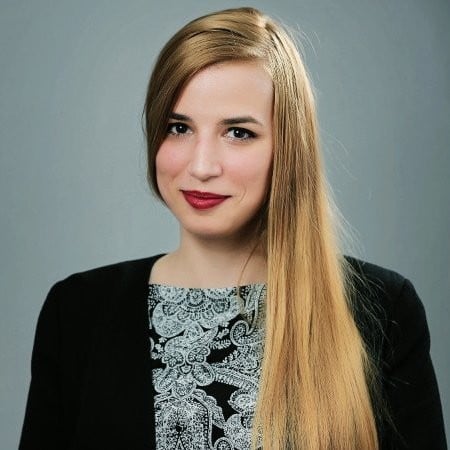December 3, 2024
 by Ben Robinson / December 3, 2024
by Ben Robinson / December 3, 2024

The road to bootstrapping a SaaS company is full of hurdles. But for product connoisseurs, it is a constant curve of learning.
The journey of building a SaaS product incorporates reshuffling product use cases, managing renewals and churns, changing subscriptions, and a whole lot of virtual trainwreck. SaaS companies deal with client system outages, revenue leaks, and product inefficiency complaints and need to keep a straight face throughout the pinching feedback.
But, these critical points can be used in the process of product ideation.
Taking these feed points and adjusting your product ideation with product lifecycle management can fuel business growth and reduce client walk-outs.
But, let's not forget. For SaaS firms, managing customer acquisition is a direct factor of product ideation. How? Let's see.
Product ideation is the continuous cycle of product monitoring, production efficiency, quality control, procurement quality, and up-top software maintenance and license upgrade workflows for a SaaS company. It is enforced to improve the status of the brand's services in the market and ensure that they survive any economic challenge.
So what’s it all about? Subscription models in the software world mean customer retention is now the metric above all others, and retention only happens when customers are successful with your product. Software product owners need to continually step up their game to stand a chance of leading in their category, delivering solid value for their users, and assuming the title of category innovation.
A software product that stagnates...fails.
How do you ensure your software product develops and adapts to your customer’s ever-changing values and needs? That’s where product ideation comes in. Many people mistakenly think product ideation is about big picture, end-state thinking, all while dreaming up a fantastic version of an end-product that’s not just three or four iterations away from where you are now – but light years away.
In contrast, when it comes to successful product ideation, the devil is in the details. Let's look at how to dive in headfirst to product ideation.
We can never fully move away from making assumptions, so let’s make peace with that. But when product owners challenge themselves with the harder questions and turn to concepts like design thinking, software product vendors can become disruptors that can change the way an industry functions.
Successful product owners are those that can take a user’s needs or desires, and not only satisfy what the user knows they want — but deliver what they didn’t even realize was possible.
As MakeIt so brilliantly puts it,
“An idea on its own is worth nothing. The process of coming up with an idea that can be turned into something valuable is called ideation.”
Design thinking in software development is rapidly becoming the norm with forward-thinking product owners. Taking this user-centered approach to building software products that define and even create categories is the approach à la mode for early adopters or budding entrepreneurs. Will we continue to find new and better ways to ideate and iterate on our software products in the future? Probably so. After all, design thinking predicts it.
Design thinking focuses on solutions, not problems. It requires product owners to step out of the traditional bells and whistles or “feature” thinking, and into the shoes of their users.
Look at this design thinking creative which briefs Airbnb product ideation so perfectly.

Source: G2
In a retention-dependent subscription economy, employing design thinking requires a business to first understand the objectives of their customers, before defining the challenges they face, ideating on solutions, and then prototyping and eventually continually iterating on these.
In SaaS, customer-centric product ideation is only one way you can increase retention. You can also facilitate effective self-service and drive customer engagement and success. Smart applications of design thinking allow product owners to shape the user experience in a way that not only provides the desired solution but that benefits the software provider’s business. Think about how UX specialists can shape the user experience and journey within a software tool to facilitate onboarding or drive freemium upgrades.
The most important element of effective software product ideation begins with understanding your users’ objectives, challenges, and steps/tasks your product can enhance in their day-to-day.
Software product ideation puts the user at the center of the process. Learn how the product-user feedback loop puts the user front and center in product ideation. Solving their problem – whether acknowledged or as yet still unknown by them – is the be-all and end-all of your purpose as a product owner.
But how can we possibly manage to understand their problems intricately enough to approach the product ideation process in this way? Plus, building relationships with your users is a vital part of software product development. Of course, there are a wide range of ways to do this. Here are five of the main ones.
Product ideation data is the key to effective prioritization of feature requests. No matter how you gather ideation requests, choosing exactly what to action in your development process can be the hard part. So, here are three tips to help you prioritize user feedback.
Capture client response data via survey platforms and analyze the persistent trends and repetitions observed in the data to find cliffhangers that your product couldn't cross. Identify the standard pain inducers, key drawbacks, satisfaction factors and most voted gitch/fault and design your product ideation workflow entirely to tackle these repetitive observations.
This could be something as simple as a specific page or group on a social media platform, for example. Or, you could launch an online community where customers can upvote and/or comment on requests, meaning product teams can easily identify the most popular ideas.
Encourage customers or even website visitors to contribute to public media forums or brand discussion forums to share their reviews, ideas, feedback, criticism, and opinions openly with the product team and enlist the loss numbers they faced due to the product. The instant and honest feedback that comes from the horse's mouth can be the biggest lynchpin for product ideation and also deliver personalized assistance to reviewer, hereby building brand reputation.

Make sure that channels of communication are established internally with the right departments or areas, as well as externally with the ideators engaged in the process of proposing ideas, discussing those ideas, and voting for their preferred ones.
Set good quality control and moderation checkers for the reviews and communication established directly on you platforms. While the customers don't overlook any dread or tricky mishap before sharing reviews and voting online, wrongly delivered reviews or ideas can disrupt the entire product ideation process and misdirect your teams.
In order to help with the above, it’s a good idea to integrate the tools you are using. If you have a community, integrating it with your helpdesk ticketing system and/or your workflow management system can streamline your customer feedback workflow.
No matter how you’re gathering user feedback, remember how to say no. Ideation is not about ticking off a list of feature requests. Refer back to design thinking methodology, and ask yourself: What is the user trying to do here?
“We always make sure that every idea gets a response, no matter how ‘out there’ it may seem. Our approach is always to ask ‘why?’. It’s vital that a product manager can get to the root problem. What is the user trying to achieve with this idea? What’s the problem they’re trying to fix? Once we get confirmation of what the problem really is, we’re in a much better position to solve it – and this way we can often find a much better solution than the original idea that was proposed.”
Daniel Boon
Product Manager, inSided
Before the next product iteration, contemplate the nook and cranny of your consumer's problems. Acknowledging that customers sitting behind those computer screens are also enthusiastic and ambitious fellows is important. Let your product ideation capture the audience's sentiment and then work on something that will surely improve their workflows and help them achieve goals.
Discover how G2's Buyer Intent can automate your buyer challenges and run personalized review marketing campaigns to better your growth.
This article was originally published in 2020 and has been updated with new information.
SaaS expert and writer at Customer Success community platform, inSided. Sharing value-driven content that helps customers help themselves.
Product-led growth (PLG) is a go-to-market strategy that centers on the product.
 by Ioana Sima
by Ioana Sima
In many circumstances, companies are debating whether to focus on a sales-led or product-led...
 by Mads Fosselius
by Mads Fosselius
So you’ve got a great product, and you’ve built the online space to sell and promote it, but...
 by Macy Thornhill
by Macy Thornhill
Product-led growth (PLG) is a go-to-market strategy that centers on the product.
 by Ioana Sima
by Ioana Sima
In many circumstances, companies are debating whether to focus on a sales-led or product-led...
 by Mads Fosselius
by Mads Fosselius


